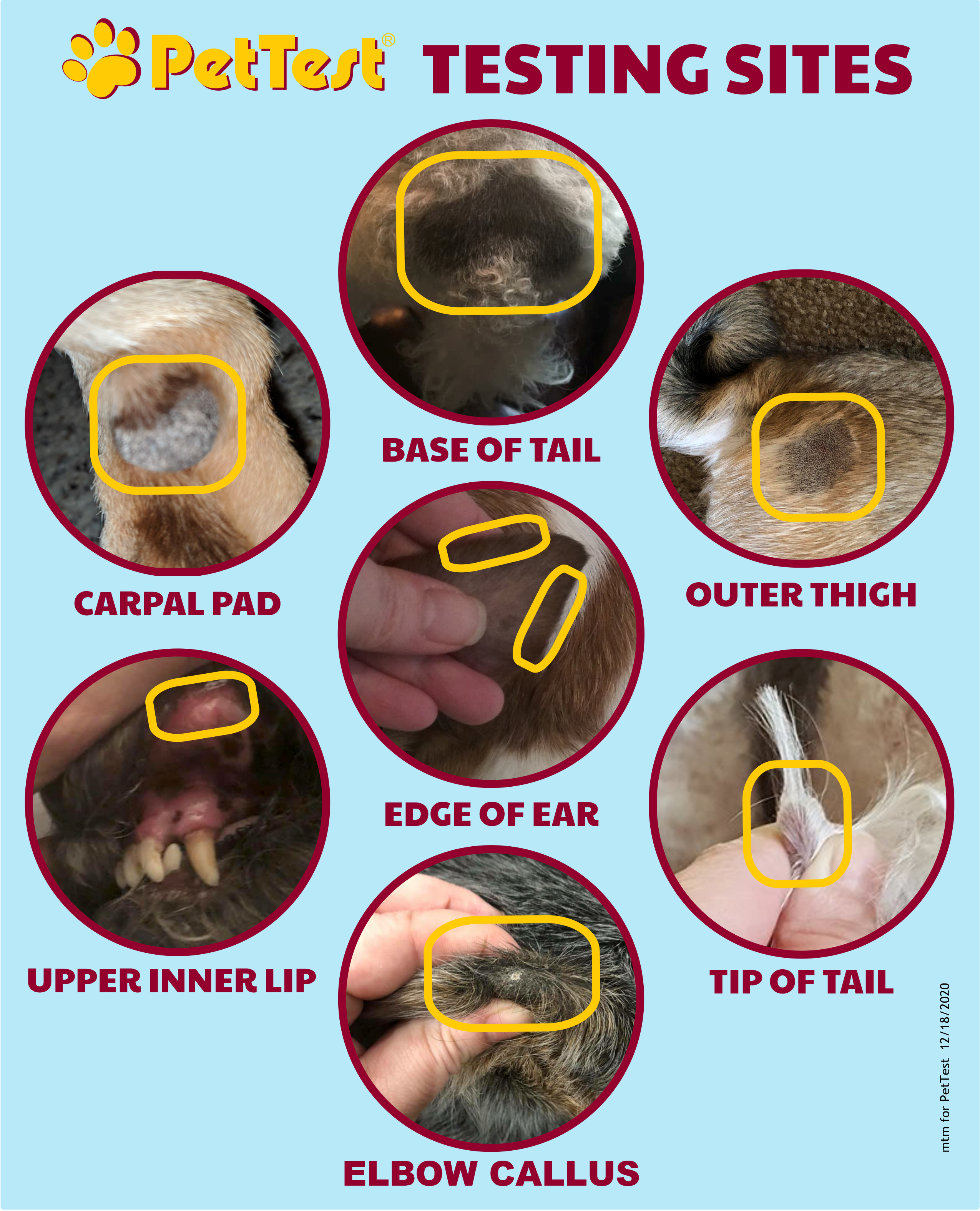Getting a Good Blood Sample
We promote daily testing of our dogs’ blood glucose levels; it just makes sense. We would not inject a human with insulin blindly, so why would we do that to our dogs? Our dogs are Type 1 diabetics. I wrote a blog recently on the importance of home testing, which you can read here.
It is quite common to read that people are having trouble getting a good-sized blood sample when they first start testing. I had trouble the first day I tried to test Lucy, we both cried and I felt like a failure. I then had a vet tech show me where to get a blood sample and after that I felt much more confident and testing time soon turned into a breeze. Most of the time not getting a sample it is due to human error, the following are a couple common reasons why we do not get decent sized blood drop.
Blood Is Not Circulating Well
When the testing site is cold and blood is not circulating well, it is harder to get a blood sample, we need to get blood to come to the surface. Massage the area for a minute, use a rice pack to warm the area for a minute before lancing.
Using The Wrong Gauge Lancet
Lancet gauge is critical when trying to get a blood sample. The smaller the number, the larger the needle. Using a 21-gauge lancet works well on our dogs, especially when we are just learning how to test.
Not Using Enough Pressure
The last thing we want to do is hurt our pups, so it is normal for us to feel squeamish when getting a blood sample. Using firm, even pressure until the lancing device clicks works best, and if you have a hard time with a lancing device try safety lancets, they are practically failure free.
Here are testing supplies you will need:
TWIST TOP LANCETS & LANCING DEVICE
Using a smaller gauge lancet works best with our dogs. I would suggest using a 21-gauge lancet when starting out, then you can adjust to a larger size like a 26-gauge lancet. There are several lancing devices you can use; I used the Red-Dot Lancing Device without problem (depth was 5 or 6). It has six depth settings, and you use a twist top lancet in the lancing device.
SAFETY LANCETS
Safety lancets are GREAT and take any guessing out of amount of pressure necessary to get a good blood sample. I have used them and tested them on myself, there is virtually no pain when using a safety lancet.
PETTEST GENTEEL PAINLESS LANCING DEVICE
If you have a hard time getting a blood sample, this device is a lifesaver! Some dogs just do not bleed, I have heard members state that their dogs are like turnips… no blood! Then they got the PetTest Genteel and have no problems getting a good sample. The PetTest Genteel uses gentle vacuum pressure to get a good blood sample.
Here are a couple tips that some veterans share with members in the group:
- Push on the activation button until you see a good-sized blood sample.
- Butterfly lancets (teal) are 30 – 33 gauge. PetTest lancets (maroon) are 21 gauge. Lancet gauge does matter, so start with 21-gauge lancets.
- Try various contact tips, we find that most members do well with the clear, orange and violet contact tips. Colors are:
Blue - Shallowest lancing depth
Yellow
Green
Clear
Orange
Violet - Deepest lancing depth
There are different areas we can use to get a blood sample:
- Carpal Pad
- Elbow callus
- Edge of ear
- Upper inner lip
- Base of tail
- Outer thigh
- Tip of tail

GENERAL TIPS FOR GETTING A BLOOD SAMPLE
- Make sure your dog is well hydrated. Dehydration can make it hard to get a blood sample.
- Shave the area where you plan on lancing.
- Warm and massage the area to get blood flowing. To warm the area you can use a rice pack, do not warm the lip area.
- A thin layer of petroleum jelly helps the blood pool.
Remember to be patient with yourself and your pup, it can take a bit of time to figure out how to smoothly get a blood sample. If your pup is apprehensive, you can always reward him/her with some healthy treats after testing. Green beans, lean meat jerky, freeze dried meats are all carb free and healthy. Lucy was pretty interested in why I was touching her ear, so I spent a lot of time sitting with her and rubbing her ears until she was desensitized to it. Testing Lu became “our time”, and it was time that I cherish. If you are feeling nervous about causing your pup pain, lance yourself, you will soon find out that it does not hurt. Also remember that our dogs feel our stress, so if you are nervous before testing time, take a few minutes out beforehand and do something that will relax you, I meditated and repeated over and over that I am saving Lucy’s life. After the first year of testing, I could get a blood sample with one eye closed and Lucy always came over and laid right next to me, she knew that right after I was done testing her, it was food time!
If you are looking for a Facebook community to join for support, I have been an admin for Diabetic Dog Owners for four years. You can also join Canine Diabetes Support and Information on Facebook as well.
For more conversations, photos, and giveaways check out PetTest on Facebook and Instagram.
Links to products mentioned:
PetTest 21 Gauge Twist Top Lancets: https://shoppettest.com/pettest-twist-top-lancets/
PetTest 21 Gauge Safety Lancets: https://shoppettest.com/pettest-safety-lancets/
Red-Dot Lancing Device: https://shoppettest.com/red-dot-lancing-device/
PetTest Genteel Painless Lancing Device: https://shoppettest.com/genteel-lancing-device/
PetTest Painless Glucose Monitoring System (PetTest Meter Kit and PetTest Genteel): https://shoppettest.com/pettest-meter-kit-with-genteel/

